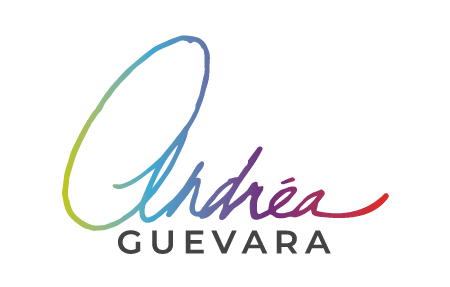3 Creative Ways to Build Your Audience

You’ve created something amazing—an important book, a stirring song, a cool website, an amazing new service—and now it’s time to build your audience. These days there are more ways to get in front of more eyeballs than ever before. The sky is the limit!
Except of course, that maybe you’ve tried some things and you’re not getting the results you expected.
If I’m honest, there’s always this part of me that wishes against all reality that one of my creations will go viral. I mean, we all do right?
Okay, maybe I’m the only one, but even if you just want to get enough attention to build your business, or change someone’s perspective, or share encouragement, it’s usually going to take some effort. And time.
While there’s no magic approach, I’d like to share three ways that you can get out there and reach your ideal customers, readers, or patrons, more effectively.
Create a Quiz
This is something I’ve been having some fun obsessing over lately: creating online quizzes. We all know how irresistible and addictive online quizzes can be, but did you know they can be a great tool for building your email list? It’s true. And it’s not just Buzzfeed that’s in the game. Smaller brands and larger (like Home Depot and Eventbrite) use quizzes to not only get new subscribers, but better serve them as well. Let me explain.
I confess I haven’t created a ton of quizzes yet, but so far I’m really impressed with not only the options you can provide folks (including an option to NOT have to sign up for your email list). I personally like that you can tailor resource recommendations based on a quiz-taker’s results or answers. And after all, if someone is nice enough to try out your quiz you want to provide as much value to them as possible. So for instance, you could recommend certain blog posts, downloads, or even products based on what their results were.
The company I use to create quizzes (and totally recommend) is called Interact. Full disclosure, I’m a partner member and an affiliate, but I am because I believe in the fricken product! Not only does their quiz-creation software have a ton of amazing features but they are truly committed to continuing to improve their software and service. They want to be the best quiz creation software out there. And I think they’re doing a helluva job. Check them out.
Here are a few quick ideas of ways you could use a quiz, as an author:
- Nonfiction: Pick a juicy question based on the subject matter of your book. For instance, “How efficient are you with time?” (for a book like Time Management from the Inside Out), or “Are you a master negotiator?” (for a book like Getting to Yes)
- Mystery Novel: “How many of these mystery novels can you name?”
- Novel: “What Kind of Warrior Are You?” or “Which Character are You?”
- Cookbook: “Which of these ingredients provide the most nutrients?” or “How many of these Food Network stars can you name?”
- Biography: “How well do you know Jackie Kennedy?”
Of course, it does get a little more challenging with memoir and some other genres, but you just might come up with a great idea based on the subject matter, niche, or genre of your book.
Here are a couple examples of writers who use quizzes: Stephanie Bwabwa and Angela J. Ford.
And here’s an example of one of my new quizzes:
Do an Informative Webinar with a Fellow Creative
Toward the end of last year I created a fun and information-packed webinar series with some amazing writers, editors, and entrepreneurs, called The Business of Writing series. It was a great way to build up our mutual email lists, share knowledge, help people, and get to know each other better.

Screenshot of one of the webinars in the series
When you partner up with a colleague to do a webinar (or online workshop) you are both able to cross-promote and build your audiences while also providing high-quality content to your audiences.
I use and recommend Webinarjam, though it can be expensive up front if you’re just starting out. There are many webinar software platforms out there so take a look around before deciding. I know some of my colleagues also like Crowdcast and GoTo Webinar, which bill monthly.
Whatever you choose, keep the presentation, graphics, and process as simple as possible. My biggest mistake when putting together the aforementioned webinar series was spending WAAAAY too much time making beautiful graphics and slides. I mean, I know people liked them, but it ate up too much of my time. Though next time, I’ve now got some pretty great graphics that I may be able to repurpose. So there’s that.
That’s the thing, whatever you try, try it a few times because chances are it won’t be EPIC the first few times. But you’ll learn how to improve things as you go along.
Also note that you can provide free webinars, free webinars where you sell something at the end (no shame in that), or even paid webinar workshops. Every creative or writer is different, so consider what works with your creative work.
Let Them Try Before They Buy
I’m not necessarily saying you should give people your book or paintings or classes for free. In fact, a lot of times it can actually undermine your value. I’m a big believer in valuing creative work! But, sometimes you can still give them something to offer a taste of what you provide.
Here are a few examples of what I mean:
- A free worksheet from your online course
- A free mini coaching session or consultation
- A free trial size of your product
- A free weekly quality tips email
- A free chapter of your book
- A free reading guide with your book
- A free bookmark
You get the idea. Give what you can to give them an impression of the value and art that you’re offering, but be sure to follow that up with an offer for them to actually buy your service, product, course, or book. In other words, on your free worksheet you could have a link back to your course with a call-to-action; maybe your free coaching session includes a coupon for 10% off their first twelve weeks; or your trial product has a coupon attached; or the chapter of your book provides a link at the end to buy the whole book; or maybe people have to sign up for your email list in order to get the reading guide for your book; or maybe someone has to leave a Goodreads review (positive or not) to get a free bookmark. These are just spitballs to get your creative ideas flowing.
I hope these three suggestions to promote your oh-so-wonderful creative work have given you some ideas on what you might try next. I realize that you might have questions about some of these ways to build your audience, because honestly each of these could be an entire post unto themselves. If you do, please feel free to leave a question in the comments below, or even email me. I’m happy to help as best I can.
Most of all, I hope your work gets the audience it so richly deserves. Keep on plugging, my friends.



